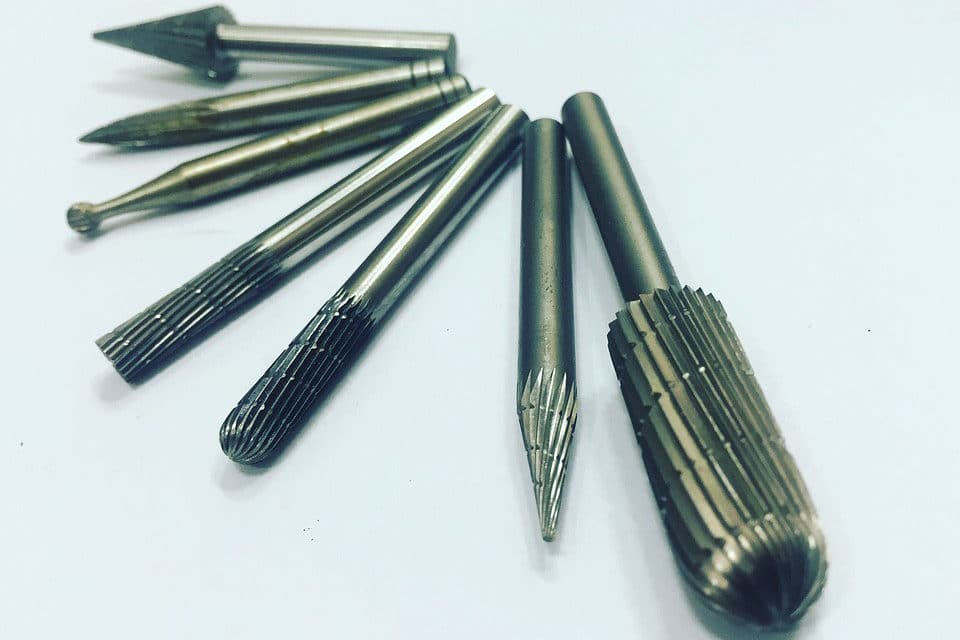If you work in any type of machine shop, chances are you could be sitting on some valuable scrap metal in the form of your leftover tungsten carbide. If you’ve upgraded recently, replaced broken parts, or just swept up metal shavings that have fallen by the wayside, you could be looking at a nice payday once you bring carbide scrap to your local recycling yard.
What’s the Deal With Carbide?
Tungsten carbide—a synthetic metal formed by the combination of carbon and tungsten elements—is one of the more in-demand metals, primarily because of its strength. Compared to other substances, nothing is harder than carbide except for diamonds, so it makes for a great cutting and boring tool.
Unlike diamond, though, carbide is exceptionally malleable, meaning it can be used in numerous applications. Anything that requires a heavy-duty metal—sports equipment, cutting, milling and mining machinery and jewelry—is likely to require carbide, so it’s easy to see why your spare metal might be valuable.
To be specific, carbide is worth generally between $5 and $10 per pound, making it one of the more valuable scrap metals by a long shot. While other metals require some serious bulk before you are able to see significant returns, every bit of carbide is worth your while. Given the volatile price of tungsten, you can always expect your local recyclers to pay top dollar to get these elements back into the supply line.
As for where you can find it in your facility, be especially watchful when discarding any old parts, especially
- Drills
- Boring bars
- Round tooling and end mills
- Punches
- Woodworking equipment
- Abrasive wheels
- Reamers
Even if you’re not getting rid of tools completely, be mindful of shavings, which can add up quickly. Keep a bucket handy in your shop, because even with a modest amount of tools in use, your carbide filings can be recycled for a good price.
How Do I Recycle Carbide?
So what should you do with your carbide once you’ve corralled it? Carbide recycling is similar to any other scrapping practice in that your top priority should be keeping the metals separate. Most recyclers will calculate your scrap value based on the least valuable metal in your container. Since carbide is a premium scrap, you’ll want to be careful to keep it separate from lesser metals.
Carbide is magnetic, so this can be your easiest identifier when sorting it. Generally speaking, it’s always a good practice to have a strong magnet handy if you plan on recycling regularly.
It’s also rust-resistant and scratch-proof, so make sure that your pile of carbide scrap stays shiny. By that same token, if you have pristine metal mixed in with another bit of scrap—especially if you work in a carbide-heavy field—it might be worth giving it a second look and separating out the carbide metal.
How Can the Recycling Experts at Gardner Metal Recycling Help?
At Gardner Metal Recycling, we believe in not letting anything go to waste. That’s why we want to help you get your carbide scrap back into circulation.
Now that you know where to find leftover carbide and how much it’s worth, pay a visit to your Austin metal scrapyard pros and let us do the rest; we’ll be happy to take your leftover carbide off your hands for a fair price.
That said, depending on how much scrap and time you have at your disposal, it may be easier for you to stick to a regular schedule and let us swing by your site to pick up your spare carbide. Don’t hesitate to reach out to schedule a pickup and we will send one of our experts your way and help turn your shop’s clutter into extra income.
To learn more about recycling scrap and get a price quote for your scrap metal recycling, contact us today. And be sure to check out our what we buy page to see what other valuable scrap you might have at your disposal.

